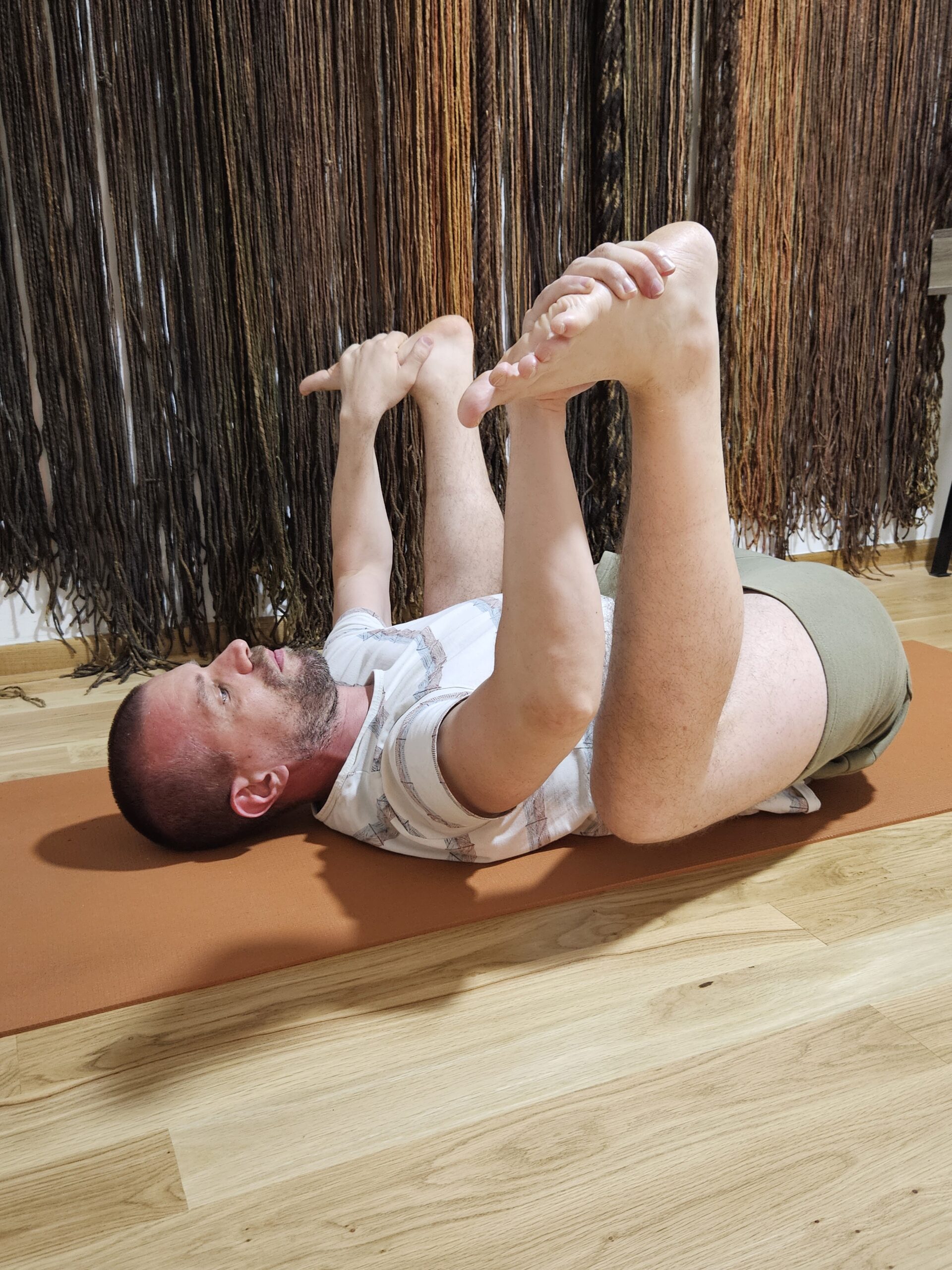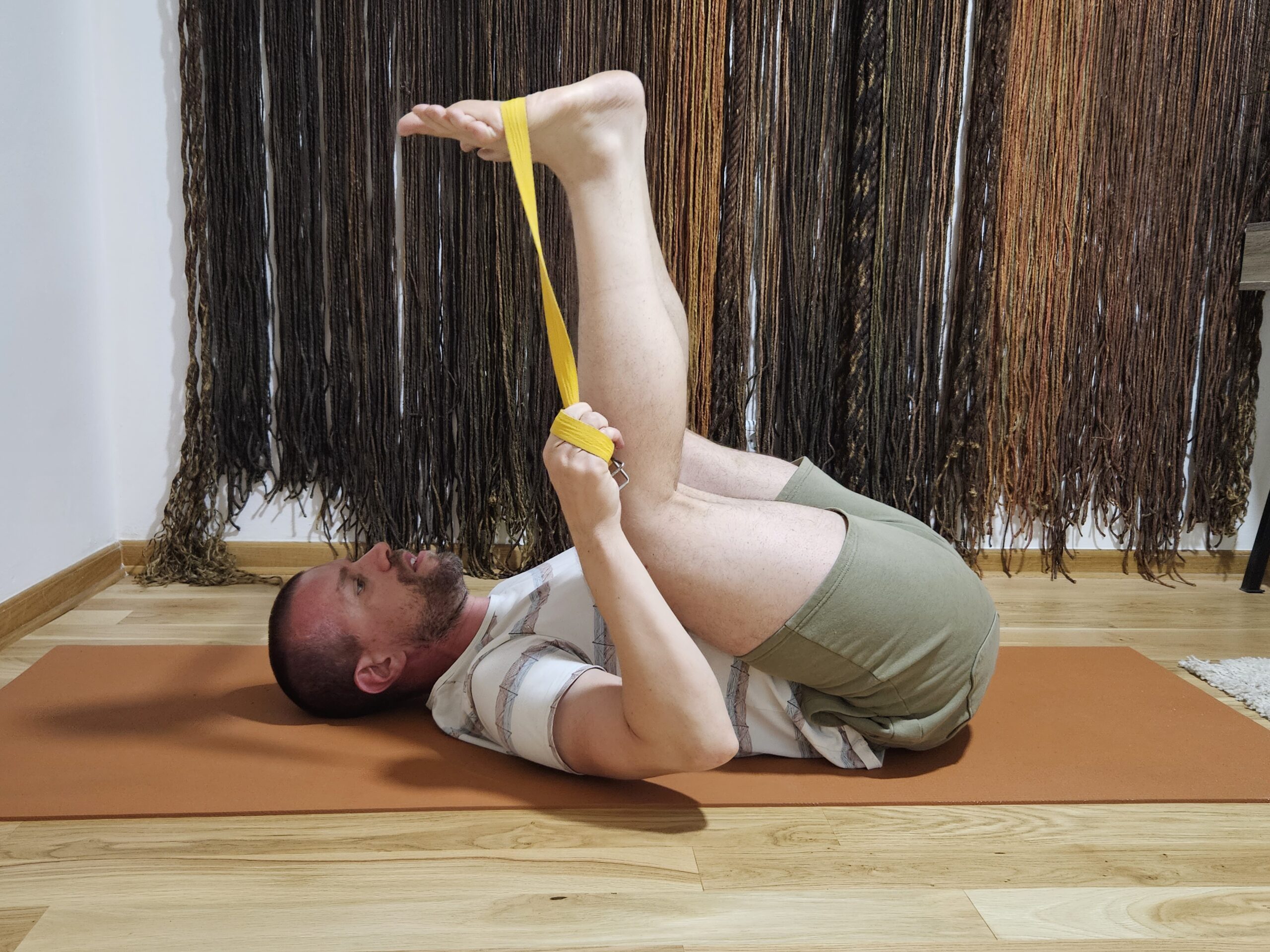Based on the openness of your hips, an experienced yoga teacher can make a very simple judgment about your physical state as well as your mental state.
Based on that assessment, the yoga teacher can correct you within your current yoga practice, all in order to achieve the optimal flow of your life energy (prana) within your body and thus helps you achieve the optimal functioning of all your chakras which is necessary to achieve balance between all of your main seven chakras.
A DEEPER INSIGHT
The position of the hips in the body is such that their openness or non-openness greatly affects your first two chakras – Muladhara and Svadhisthana.
If your hips aren’t open enough and don’t provide enough mobility to your body, it can be a big challenge to balance all of your seven main chakras.
Starting from the fact that the foundation is always the most important in life, we can safely say that this also applies to your chakras. If your first two chakras are not functioning completely properly and are not in harmony with each other, the proper functioning of your entire chakra system is called into question.
One of the ways that you can certainly harmonize the work of your entire chakra system is to practice yoga.
When it comes to the proper functioning of your first and second chakras, open hips certainly have a great influence on their activity.
Why can hips be closed?
Your hips may be tight due to reduced physical activity. In order for this not to happen, you must constantly lubricate your hips— the joints of your hips first of all.
If you don’t move enough and do mobility exercises, and if you sit for too long without taking any breaks, you will face the immobility of your hips due to insufficient physical activity.
The closure, stiffness, and lack of mobility of your hips will greatly hinder your mobility in your senior years.
Also, the closure of the hips can occur because you keep certain emotions inside you and don’t get rid of them. Some of the emotions that affect stiffness, closure, and immobility of the hips can be fear of the future, fear of attachment, inability to let go of the past, and inability to love yourself.
Certain physical and psychological traumas can also affect the closure of your hips. For example, women who have just given birth may experience stiff and closed hips due to possible traumas that may have occurred during childbirth.
In order to achieve the necessary openness and mobility of your hips, we definitely recommend a regular yoga practice with an emphasis on poses that contribute to your hips’ opening in a completely natural way.
The Happy Baby pose, or Ananda Balasana in Sanskrit, is certainly a gentle and soothing pose that greatly contributes to the opening of your hips.
PRACTICE
When it comes to performing the Happy Baby pose, it is a very simple pose, but it should definitely be performed with a lot of attention since it can be challenging for people whose hips are not open or if their hamstrings, groin, or inner thighs are not stretched enough.
When performing this pose, you can place a blanket or pillow under your back if necessary so that you can stay in the pose in case you have problems with your lower back. In this way, a blanket or pillow will provide you with the support that you need.
You can practice the Happy Baby pose in three ways, so there are three variations.
The first variation involves the full pose. The full pose means that while lying on your back, you raise your legs to ninety degrees and bend them at the knees so that your ankles are above your knees, in line with them. So, your ankles must be neither in front of nor behind your knees. After that, you take the soles of your feet with your hands and gently lower your knees down, all in the comfort of your body. Please do not force your knees down, especially if your hamstrings, groin, or inner thighs are not stretched well enough. When you find a position that suits your body, try to stay in it for at least five breaths. Mature practitioners can hold this pose for several minutes to get a more complete benefit.

The second variation essentially represents a Happy Baby pose for only one hip, i.e., one leg. So, when you do the Happy Baby pose for right hip opening, your left leg will be fully extended forward and on the yoga mat the whole time. So, in this variation, you lower only your right knee.

The third variation means that you can use a yoga strap as an aid. If you are unable to reach the soles of your feet with your hands, that is a sign that you need a yoga strap. The basic role of the yoga strap is to place it on the soles of your feet, take the yoga strap with your hands, and gently lower your knees down by pulling the yoga strap with your hands.

BENEFITS
There is a belief among women that the more open their hips are, the easier it will be for them to give birth, and vice versa.
The first benefit that you can feel from practicing this pose is that the stiffness in your hips has decreased. You will feel that there is no more tension in your hips that exists due to prolonged sitting and immobility.
Since it is a very gentle pose, it helps you relax completely. This pose is especially recommended for people who are dealing with depression and anxiety.
By regularly practicing this pose, in addition to opening your hips, you will achieve a good stretching of your groin, tendons, and inner thighs.
The Happy Baby pose is also recommended to relieve the lower back pain.
If you are facing fatigue and exhaustion, we recommend this pose, especially since you slow down your heart rate and thus do good for your entire physical body by practicing this pose.
CONCLUSION
Although the name of the pose is Happy Baby, it can be challenging more so than happy, especially if you are just starting your yoga practice and your hips are not too open. In that case, we advise you to do the pose completely lightly.
Don’t force your knees to drop; drop them inch by inch, day by day. This is the only sure way that you will persevere your yoga practice and that you will be grateful for the benefits that you will reap from it.
Frequent Asked Questions on the Happy Baby Yoga Pose
What is the primary purpose of the Happy Baby pose?
The Happy Baby pose, or Ananda Balasana, primarily aims to open the hips, stretch the inner thighs, and provide relaxation. It also assists in balancing the first two chakras.
Can I practice the Happy Baby pose if I have never done yoga before?
Yes, beginners can practice this pose, but it’s essential to listen to your body and not push it too far. Using props like yoga straps or cushions can assist in making the pose more accessible.
How often should I practice the Happy Baby pose?
For optimal results, it’s recommended to incorporate the Happy Baby pose into your regular yoga routine. Even practicing it a few times a week can provide noticeable benefits over time.
I find it hard to grab my feet in the pose; what can I do?
If you’re struggling to hold your feet, you can use a yoga strap to assist. Place the strap over the soles of your feet, holding its ends with your hands, and gently pull to achieve the desired stretch.
Can this pose help with lower back pain?
Yes, the Happy Baby pose can be beneficial for relieving tension and pain in the lower back when practiced correctly.
Are there any conditions for which this pose is not recommended?
If you have any severe hip or knee injuries, or if you’re pregnant and find the pose uncomfortable, it’s advisable to skip it or consult with a yoga instructor or medical professional before attempting the pose. If you feel any pain when trying the pause stop immediately.







